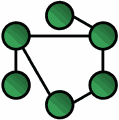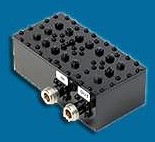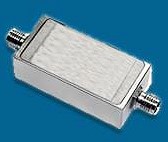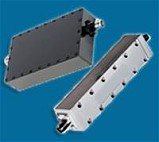Anatech Electronics Newsletter - March 2017 |


Press Release Archives: 2024 | 2023 | 2022 | 2021 |2020 2019 | 2018 | 2017 | 2016 | 2015 2014 | 2013 | 2012 | 2011 | 2010 2009 | 2008 | 2007 | 2006 | 2005 Content is copyright of company represented. Page format, custom text and images are RF Cafe copyright - do not distribute. Anatech Electronics, a manufacturer of RF and microwave filters, has published its March newsletter. As always, it includes both company news and some tidbits about relevant industry happenings. In it, Sam Benzacar discusses, among other topics, spectrum sharing, including the ISM bands and a DARPA program called Shared Spectrum Access for Radar and Communications (SSPARC) that has the goal of developing more advanced sharing technology so that radars and military and commercial communications systems can cooperate in near real time. Anatech's business is to make certain that system and circuit designers have capable filters available to assure successful implementation. A Word from Sam Benzacar
When it comes to spectrum, no one likes to share, but as we can't make any more of it, that's one of the very few alternatives. Generally, two services share the same frequencies and one has priority over the other. When the second-tier service detects activity on the same or sometimes an adjacent channel, it must move elsewhere. While this sounds like a great way to encourage frequency reuse, it has been widely debated for years as various companies complained that it would be too complex, impossible to enforce, or cause other headaches. But one fact is a near certainty: there will be interference. Spectrum sharing isn't a new concept, as it's used by various services in the crowded ISM band at 2450 MHz and is a mandatory requirement for using the "TV white spaces" opened up after over-the-air TV broadcasting transitioned from analog to digital transmission techniques. It's also part of the national public safety broadband network, for which there should soon be a contract award. The Department of Defense saw this coming years ago and is taking steps to make sure "intruders" don't interfere with its radars through various initiatives. One of is a DARPA program called Shared Spectrum Access for Radar and Communications (SSPARC) that has the goal of developing more advanced sharing technology so that radars and military and commercial communications systems can cooperate in near real time. There are others as well. Over time, these initiatives should make spectrum sharing must less likely to cause interference. In the meantime, it seems inevitable that sharing frequencies will cause interference problems for both the primary and secondary services. One of the reasons is that unless communications are able, as DARPA proposes, to react almost instantaneously there will be times when both are transmitting (and attempting to receive) at the same time. I may be overly pessimistic on this subject but three decades in the filter business has taught me that interference has a way of defeating the best efforts of approaches in which multiple systems operate close together. I hope I'm wrong, but…. If you're designing any type of communication system that operates close to other services with narrow (or no) guard bands, are working to build a new system destined to operate in a shared environment, or are having interference problems with a fielded system, please give Anatech Electronics a call. We've been solving interference problems with high-performance RF and microwave filters since 1990. You can reach us at (973) 772-4242 or by email at sales@anatechelectronics.com. What's News
DARPA wants to know more about how human cells use electromagnetic radiation to talk to each other, and is investigating it in a program called RadioBio. The goal is to determine if cells can exchange information with EM signals, what the cells are communicating, and how they achieve it. The program will attempt to learn how natural "antennas" are capable of generating and receiving information in a noisy, cluttered EM environment," at frequencies from kHz to THz.
Scientists are building networking technology to provide people weather alerts even if they don't have internet connectivity. Developed by IBM Research and The Weather Company, Mesh Network Alerts is a peer-to-peer mesh networking technology that allows Android devices to communicate with each other without the need for Wi-Fi or cellular connectivity. It will first be deployed in India before expanding to Africa, Asia, and Latin America where networks are congested and connectivity is limited. The accompanying smartphone app requires only 3.2 Mbyte/s of storage and can store weather data offline for up to 24 hr.
Belgian chip research consortium Imec and satellite payload developer Thales Alenia Space have demonstrated that Imec's GaN-on-Si power devices based can withstand heavy ion and neutron irradiation with no degradation in performance, making them well suited for spaceflight applications. Imec irradiated its GaN power devices with heavy ions of xenon and neutrons that are the primary cause of failed electronic circuits in satellites.
Israel Aerospace Industries (IAI) has developed a radar that can identify targets traveling through heavily wooded areas. The ELM-2112FP persistent surveillance foliage penetration radar is being marketed as a border security solution. The radar's forest-penetrating abilities rely on the ability of FMCW modulation to track people and vehicles in congested areas even without a clear line-of-sight.
Check out Our Filter Products
Cavity Band Pass Filters LC Band Pass Filters Cavity Bandstop/Notch Filter About Anatech Electronics Anatech Electronics, Inc. (AEI) specializes in the design and manufacture of standard and custom RF and microwave filters and other passive components and subsystems employed in commercial, industrial, and aerospace and applications. Products are available from an operating frequency range of 10 kHz to 30 GHz and include cavity, ceramic, crystal, LC, and surface acoustic wave (SAW), as well as power combiners/dividers, duplexers and diplexers, directional couplers, terminations, attenuators, circulators, EMI filters, and lightning arrestors. The company's custom products and capabilities are available at www.anatechelectronics.com. Contact: Anatech Electronics, Inc. 70 Outwater Lane Garfield, NJ 07026 (973) 772-4242
Posted March 22, 2017 |
 By Sam Benzacar
By Sam Benzacar DoD Explores Human
Cell RF Interaction
DoD Explores Human
Cell RF Interaction Mesh Network for Weather Alerts Needs No Internet Access
Mesh Network for Weather Alerts Needs No Internet Access GaN
Plays Well in Space
GaN
Plays Well in Space IAI Develops Forest-Penetrating
Radar
IAI Develops Forest-Penetrating
Radar

